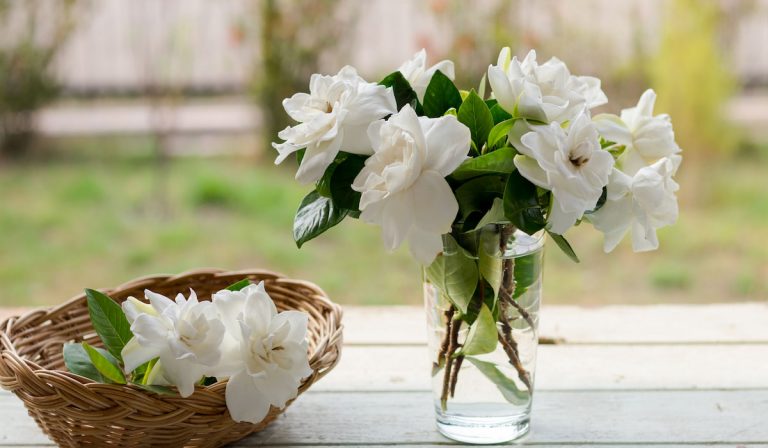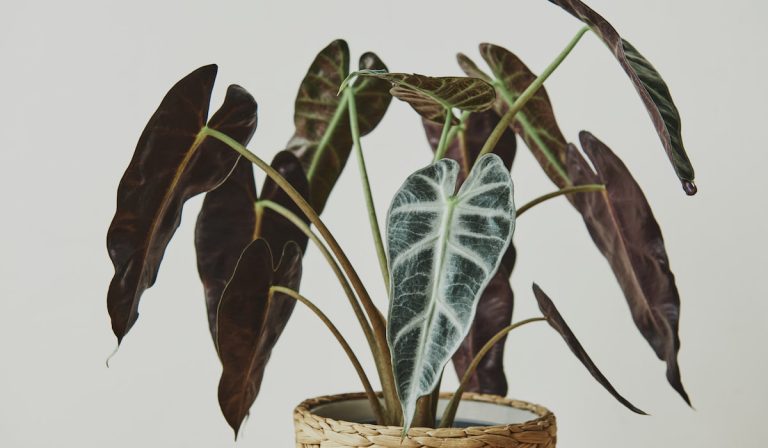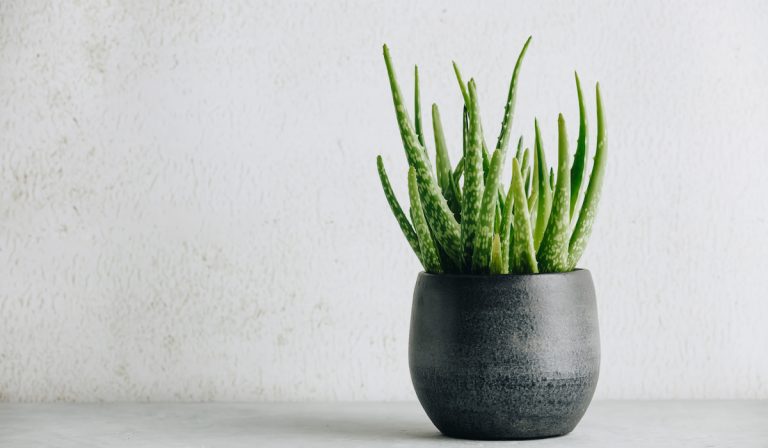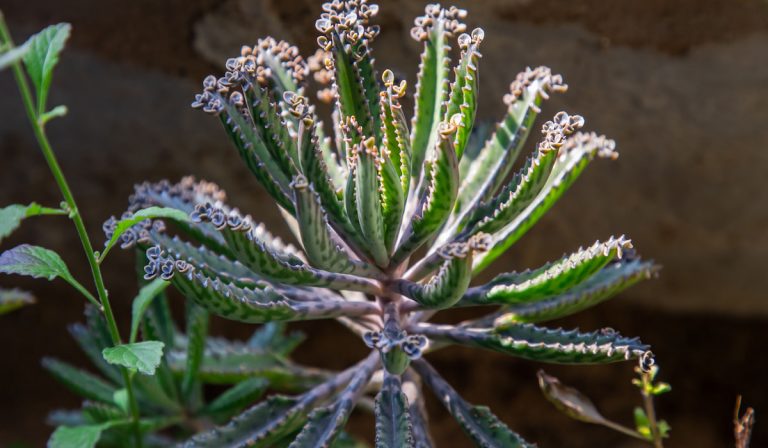Will Bamboo Grow in Shade?
Bamboos are classified as a type of grass. With over 1200 species of bamboos available, they can thrive in various habitats and climates, depending on the species.
Will bamboos grow in the shade?
Yes, bamboos will grow in the shade. Bamboos grow and thrive in different climates. Some bamboos flourish in partial shade, while others prefer adequate sunlight exposure. Some bamboos can tolerate both sun and shade.

Before planting bamboo trees, you need to find out the best variety for your environment.
The subsequent paragraphs of this article will provide information on the bamboos that grow in the shade. We will also discuss how to place bamboo plants in the home and the pros and cons of growing bamboos.
Table of Contents
Types of Bamboos That Grow in Shade
Some species of bamboos thrive in the shade. This makes them the perfect choice for those shady areas in your garden. Given below is a list of bamboo varieties that do well in the shade:
1. ‘Green Screen’ Umbrella Bamboo
‘Green Screen’ umbrella bamboo (Fargesia robusta ‘Pingwu’) grows and reaches a height of about 18 feet. It is found in USDA growing zones 6-9.
2. Dwarf Whitestripe Bamboo
At maturity, Dwarf Whitestripe bamboo (Pleioblastus fortunei) grows to about 30 inches in height. It can survive freezing temperatures up to -5°Fahrenheit. It is found in USDA growing zones 7-10
3. Kuma Bamboo
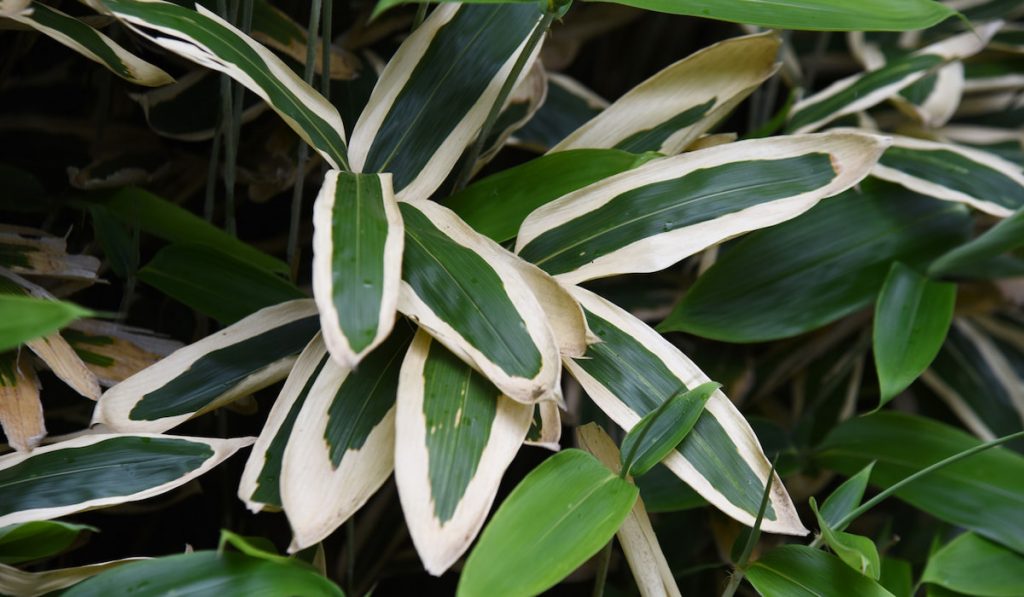
Kuma bamboo (Sasa veitchii) is a dwarf running bamboo variety with deep green leaves. It is found in USDA growing zones 6-9.
Some other varieties of bamboos that do well in the shade include the following:
- Dwarf Greenstripe Bamboo
- ‘Walking Stick’
- ‘Albostriata’
- ‘Arrow’ Bamboo
- ‘Blue Dragon’
- ‘Himalayan Blue’
Where Bamboo Should Be Placed in a Home
When planting bamboo in your home, replicating the growing conditions of its natural habitat is essential.
Since most bamboo varieties are tropical plants, they require warm temperatures, well-drained soil, and adequate moisture.
Another thing to remember is to provide the perfect lighting conditions for your bamboo.
There are a few species of bamboos that can withstand the low-light conditions of a home. These plants are usually understory plants – you will find them growing in dappled shade.
You can place your bamboos close to a windowsill with translucent blinds or shades to protect them from direct sunlight. Monitor your plants carefully, and if you notice the plant’s leaves are falling or turning yellow, it may require more sunlight.
Houses with a sunroom, an attached greenhouse, or an atrium can provide the best conditions to grow bamboo plants indoors. These spaces will most likely provide the kind of indirect, bright light bamboos thrive in.
You may also need to provide screens or shades for your bamboos. This helps to prevent excessive sunlight, especially in desert areas or during summer. Provide humidity for your bamboos when necessary.
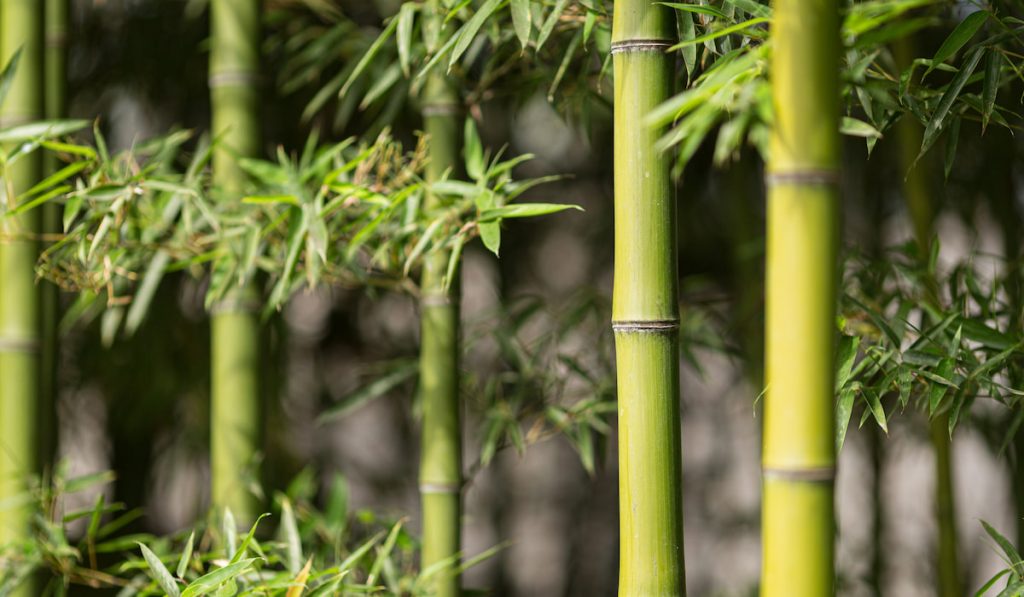
How Much Sunlight Does a Bamboo Plant Need?
The answer to this depends on the bamboo variety. While some variants need full sunlight, others need partial shade. Some other types of bamboo prefer indirect sunlight.
Most species of bamboos, with some exceptions, thrive with adequate sunlight exposure. Such exposure facilitates the growth of their foliage, particularly at their topmost parts.
If the bamboos are in an open area with enough sunlight reaching their base, they will also produce foliage all the way to their base.
When bamboo plants are crowded with other bamboos or trees, the lower part of the bamboo will not receive enough sunlight. This will result in little foliage growth on the lower regions of the plant.
Bamboos only focus on growing foliage in areas that receive adequate sunlight, resulting in a higher chance of photosynthesis.
Bamboos growing in the shade tend to grow taller to acquire more sunlight. Those that grow in the shade are usually taller than bamboos of the same species with enough sunlight.
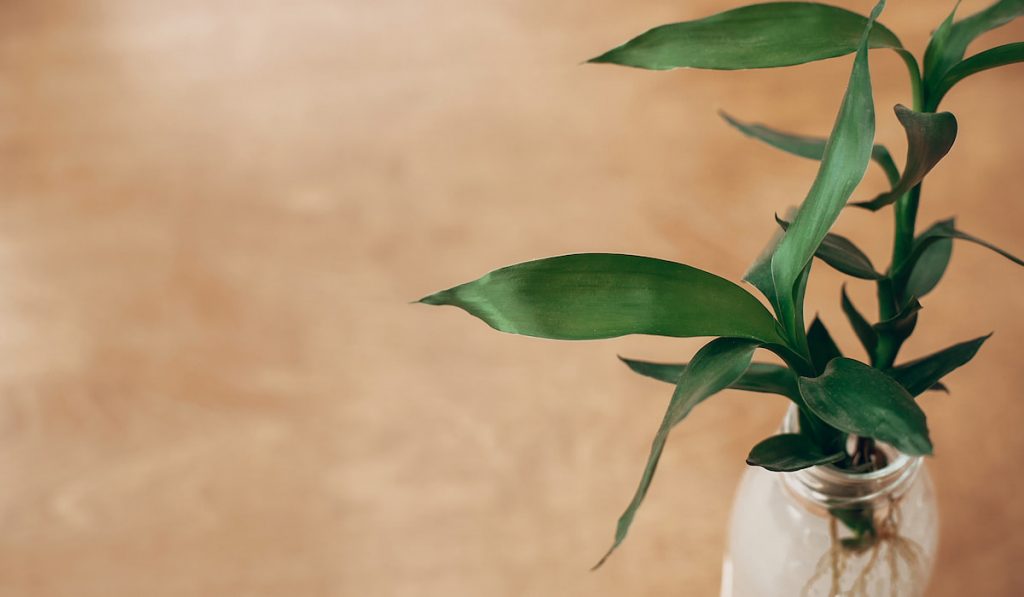
Pros and Cons of Growing Bamboo
Pros of Growing Bamboo
Versatility
With over 1200 different species, bamboos are available in several colors, growing habits, and height ranges. Some species prefer bright sunlight, while others prefer shade.
Hardy bamboo varieties can withstand freezing temperatures of -20°F (-29°C.). On the other hand, some cannot handle a light frost. There is a species of bamboo for almost every climate.
Pest Resistance
Animals like deer, rabbits, and other mammals do not take a liking to bamboo. This is one of the many reasons gardeners grow it.
Bamboo is hardly disturbed by insect pests. But in dry climates, they are vulnerable to bamboo mites.
Environmental Benefits
Bamboo can absorb greenhouse gases and release oxygen into the environment. Bamboo is a renewable resource that can help solve the dwindling forest problem.
Hardwood forests take a while to grow back, but bamboo plants grow quickly, and depending on the species, can be harvested within 1-5 years.
With their extensive root system, bamboo plants can help prevent soil erosion which would benefit topsoil depleted areas.
Easy to Grow
Another advantage of bamboos is how easy they are to grow. With the right climate and environmental conditions, bamboo trees can grow in any reasonably well-drained, fertile soil.
It does not require a lot of maintenance. Although bamboos can tolerate drought, they thrive with regular irrigation.
Privacy Screening
Bamboo can be used as an inexpensive, fast-growing, and attractive privacy screen. If you are not concerned about invasiveness, you can get the running species, which can grow more than 3 feet each day. Climbing species take a while to fill in.
Used Around the World
With their high nutritional value, bamboos are used as medicine and food by livestock and people everywhere. Their strong fibers are also used as building materials.
Bamboo is also used for making items like paper, musical instruments, fishing poles, and floor mats.
Cons of Growing Bamboo
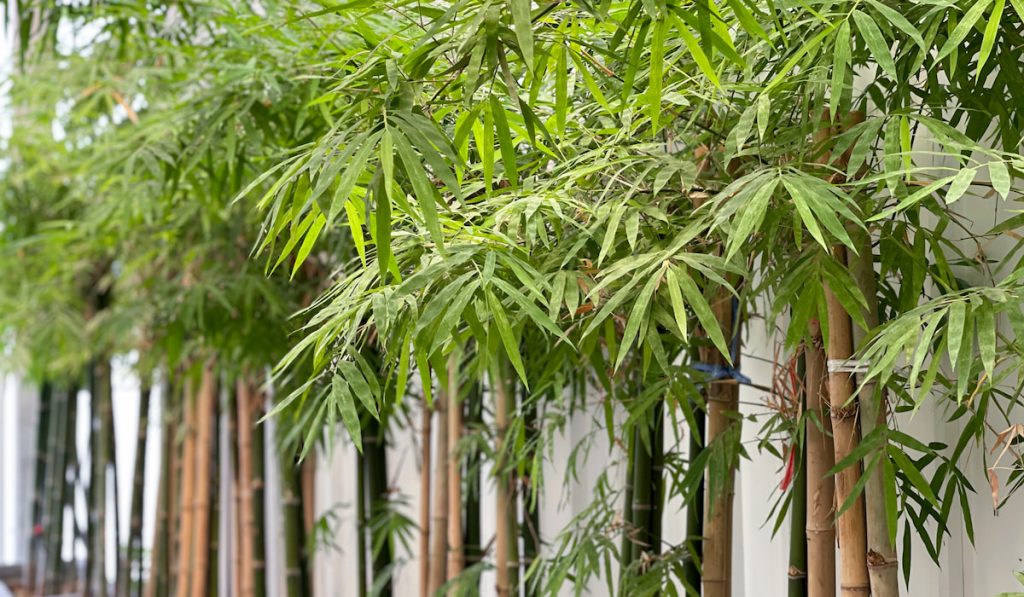
Bamboo Is Invasive
Its reputation for being very invasive is enough reason not to grow bamboo. Even though some less invasive species are available, you may still run the risk of experiencing this invasiveness.
For some bamboo species, their rhizomes can grow up to 20 feet within a single growing season. In the right conditions, some bamboo can grow 3-4 feet high within 24 hours.
A Threat to Biodiversity
Due to their invasive growing habit, bamboo plants are a menace to other plants. They may eventually outcompete them for the habitat.
Bamboo Wants a Relationship, Not Something Casual
If you like to rip out plants each season to try something new, then do not grow a bamboo.
One issue with growing bamboo is it wants to stay for the long term. Trying to get rid of it is a difficult task.
Difficult to Eradicate
When bamboos get out of hand, they can be quite difficult to control. Once a running bamboo is mature, its herbicide-resistant rhizomes stretch out to almost 100 feet. It can also send its shoots out at any point.
To get rid of it, you can either dig up the soil and remove the rhizomes or mow it down to hinder the rhizomes. You can also apply herbicides frequently. Worst case scenario, you might end up using a combination of these methods.
Best Time to Grow Bamboo
Bamboo rhizomes are lively during summer to the backend of autumn. So, if you intend to plant bamboo, you should do it during spring or at the beginning of autumn. Although, autumn is usually the more preferred time for planting.
Planting bamboo at the start of autumn ensures the roots spread throughout the soil before becoming dormant during the winter. As spring approaches, the bamboo root system is already established and prepared for a new growing season.
You should not plant bamboo plants during periods of active growth. For most bamboo, this period is towards the end of summer.
This is when new leaves start growing, and new shoots emerge. If the roots are disturbed during this period, it can cause harm to the bamboo.
You can plant container bamboo at any time. Since the roots are not disturbed, the potted bamboos can be safely transplanted.
When you decide to transplant potted bamboos during their growing season, you should take care and not disturb its root ball.
Final Take
Bamboo will thrive when planted in the shade or exposed to sunlight. Depending on the amount of sunlight exposure, bamboo of similar species will look different.
Bamboos planted in shady or crowded locations grow tall with less foliage at the plant base. In contrast, those exposed to sufficient sunlight are typically shorter with bushier foliage.
Resources
- https://bamboobotanicals.ca/html/bamboo-care/planting-bamboo.html
- https://blog.gardeningknowhow.com/gardening-pros-cons/pros-and-cons-of-planting-bamboo-in-gardens/
- https://www.bambooland.com.au/faqs/how-much-sun-does-bamboo-need/
- https://bamboobotanicals.ca/html/bamboo-species/choosing-bamboo.html
- https://bambubatu.com/growing-bamboo-in-the-shade-suggested-species/
- https://homeguides.sfgate.com/bamboo-grow-shade-69398.html
- https://www.makaan.com/iq/video/home-sutra-vastu-tips-for-placement-of-bamboo-plant
- https://www.garden.eco/best-place-to-keep-bamboo-plant-in-house



